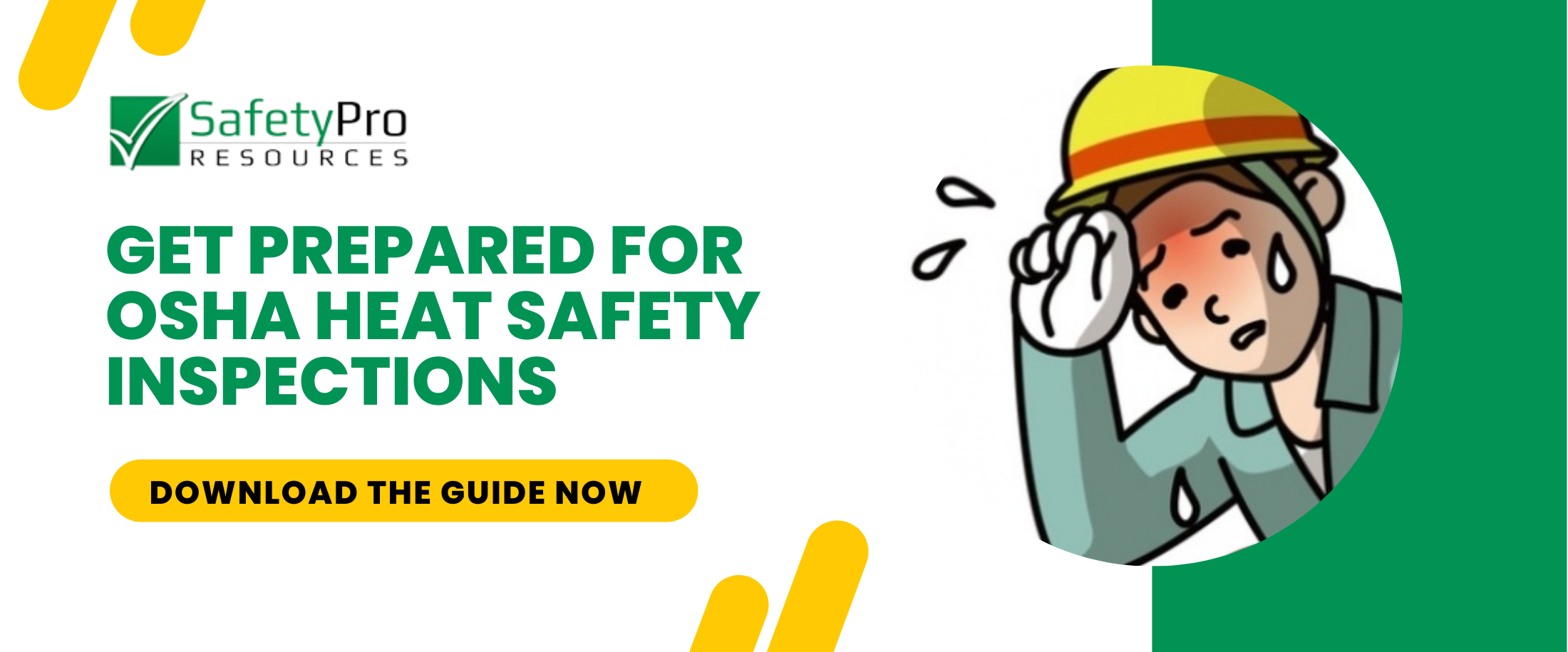Millions of American employees are exposed to heat in the construction industry, and over 3,500 of them get sick from heat-related illnesses every year.
Unfortunately, some people lose their lives to heat-related illness—around 50–70% of outdoor fatalities occur during the first few days of working in warm or hot conditions.
Most of these cases are preventable. The body requires time to build up a tolerance to high temperatures through a process called heat acclimatization. Lack of acclimatization can be fatal. For this reason, the Occupational Safety and Health Administration (OSHA) has established a focus on heat safety. The agency will increase awareness and enforcement to eliminate workplace heat hazards through a new proactive campaign known as the National Emphasis Program (NEP).
Let's review OSHA's NEP and heat safety standards to better understand what is expected of employers and what OSHA will be checking for during an inspection.
New Heat Hazard Emphasis Program (NEP)
Employers and construction site supervisors are now responsible for protecting workers from heat hazards under the NEP, which targets 70 "high-risk industries" and will demand inspections and enforcement this year.
The 70 industries include outdoor and indoor construction and non-construction employers. Examples of non-construction sectors include agriculture, sawmills, bakeries, couriers, motor vehicle and aerospace parts manufacturers, tire shops, storage facilities, nursing homes, car dealers, waste management, and restaurants.
OSHA's Heat Safety Standards
OSHA has historically protected workers from high heat by applying the General Duty Clause, which requires employers to offer employment and workplaces free of recognized dangers, including heat exposure.
Now that summers are becoming increasingly hot, with 18 out of the last 19 being the hottest ever recorded, the President has instructed the agency to prioritize implementing a new heat illness standard (second only to the agency's COVID-19 strategy in urgency).
OSHA's proposed heat illness standard is still in its preliminary stages. The NEP is just the most recent of OSHA's efforts to address heat hazards in the workplace as the agency continues on the long path to establishing a federal heat standard. Meanwhile, state standards can provide helpful guidance.
Heat Standards for Specific States
Several states have established OSHA-approved state plans, setting regulations for hazards not yet covered by federal OSHA standards.
For example:
- Employers in California must provide heat illness prevention training, water, shade, and written procedures to comply with the Cal/OSHA Heat Illness Prevention Standard; 80°F triggers the on-site requirements.
- Employers in Minnesota must measure indoor heat using the wet-bulb globe temperature index (WGBT), which combines humidity, air temperature, air speed and radiation. The calculated temperature is the permissible heat level, but things also depend on worker exertion levels. For example, in a heavy work scenario (350 kcal/hr. or more), the maximum WGBT is 77°, which means that the indoor temperature cannot exceed 77°F.
For states like Louisiana and neighboring states that do not have a state plan, employers should follow OSHA regulations.
Employer Responsibilities for Addressing Heat Safety
Businesses can remain OSHA complaint when it comes to heat safety by ensuring acclimatized workers:
- Have access to drinking water
- Are allowed to take breaks periodically
- Have access to shade at all times
In addition, businesses are expected to:
- Train employees on how to prevent heat illnesses
- Train supervisors to identify the signs and symptoms of heat illnesses
- Have a plan for slowly acclimatizing new and returning employees to the heat
- Have a plan for monitoring employees and responding to heat-related emergencies
OSHA will perform proactive inspections for heat-related hazards in outdoor and indoor workplaces whenever the National Weather Service issues a heat advisory.
During an OSHA heat inspection, the following may occur:
- A review of injury logs for heat-related illness and ER visits
- Inquiry about headaches, dizziness, fainting, dehydration, etc.
- Confirmation of a heat illness and injury prevention program that addresses hydration, breaks, shade, acclimatization, training, the buddy system, and other rules.
- Documentation of pertinent conditions, like the heat index, employee's exertion level, and duration of heat exposure.
Therefore, employers should establish the necessary safety measures to protect employees from such threats before OSHA's assessment.
Related Article: Preventing Worker Heat Stress Illnesses and Injuries
Keep Contractors Safe this Summer
Employers can avoid tragedies like heat-related illnesses and fatalities by taking action to protect new and experienced employees from excessively high temperatures. They can also prevent severe penalties for failed inspections.
If an OSHA inspection results in violations, there will be a deadline to rectify them before being fined. However, significant citations can result in immediate fines of $14,502 per violation. If violations are not addressed promptly or are repeated, fines can reach $145,027 per violation. In addition, one can be held criminally liable for ignoring OSHA violations that cause injuries.
To avoid inconveniences and keep workers safe, get a free heat safety guideline today.

















